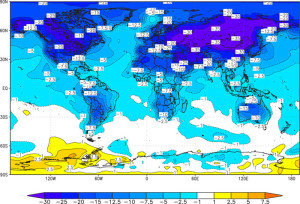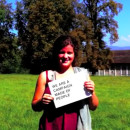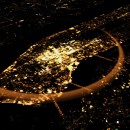The Threat to All Nations and People
by Steven Starr
Although US and Russian Presidents have jointly declared that relations between their nations have been "reset", and that nuclear war between them is now "unthinkable", this is hardly true. US and Russian strategic war plans still contain large nuclear strike options with hundreds of pre-planned targets, which clearly include cities and urban areas in each other’s nation.
Furthermore, the American and Russian Presidents both have the power to authorize and initiate a nuclear attack in a matter of a few seconds. They are constantly accompanied by a military officer who carries a "nuclear briefcase", a special communication device that allows either President to almost instantly order the launch of their nuclear forces. This launch order requires only a few minutes to carry out, because the US and Russia still keep more than 800 ballistic missiles armed with at least 1739 strategic nuclear warheads at high-alert, always ready to fire.
These warheads are each 7 to 85 times more powerful than the atomic bomb which destroyed Hiroshima. They sit atop launch-ready Intercontinental Ballistic Missiles (ICBMs) that are located in deep underground silos or upon road mobile rocket launchers or upon Submarine Launched Ballistic Missiles (SLBMs) inside nuclear submarines; all are controlled by launch crews who patiently wait 24/7 to execute a valid launch order.
Launch-ready nuclear forces are linked to the US and Russian Presidents by their respective nuclear command and control systems, which include ground and space-based Early Warning Systems that detect a hostile missile attack. Any tactical warning is quickly evaluated, and once validated it is passed up the chain of command in a matter of a few minutes. These high-speed information networks are designed to provide each President the capability to order the launch of his nuclear forces before they can be destroyed by an incoming nuclear attack.
However, this is hardly a simple task, because the nominal flight time of a ballistic missile traveling between the US and Russia is about 30 minutes; it is 12 minutes for a missile launched by a submarine stationed off the coast. These short flight times define and dictate how much “Presidential decision-making time” is available for the President to decide whether or not to launch a nuclear strike in response to the perceived attack.
The decision to either launch a responsive nuclear counter strike, or ride out the attack, must be made in less time than it takes for the "perceived" incoming ICBM/SLBM attack to arrive. Otherwise the incoming warheads will likely destroy most of the ground-based forces, along with the nuclear command and control system and leadership necessary to coordinate and launch a nuclear counterstrike-- assuming the attack is real. A launch in response to a false warning will result in accidental nuclear war.
Only Seconds to Decide on Nuclear War
The entire process of detecting and evaluating the attack warning must be completed in less than 7 minutes. According to retired military officers, the President is then given a 30 second briefing. If the attack warning is still believed to be real, the president is then given a series of options, all of which have been planned well in advance.
If the attack is believed to come from a submarine, the President will be told that he then has as little as 10 seconds to make the decision whether or not to launch a responsive nuclear attack. This is because the nuclear warheads delivered by a SLBM will arrive in slightly more than four more minutes. The order to launch must be immediately conveyed to launch crews sitting in underground bunkers, who control the missiles. The missiles must then be fired and clear the upper atmosphere before the incoming warheads begin to detonate.
For 30 years the US and the Soviet Union have relied upon highly automated nuclear command and control systems, which work in conjunction with a network of early warning systems and their nuclear armed ballistic missiles. The possession of this complex integrated network of satellites, radars, computers, underground missile silos, fleets of submarines and bombers, and military intelligence give both nations the capability and option to launch strategic missiles upon tactical warning of attack.
Launch on Warning?
In the 1970s, this strategy came to be known as "Launch-on-Warning” (LOW). Despite recent official denials, it seems obvious that the only purpose in developing a Launch-on-Warning capability was to be able to implement it through a policy of Launch-on-Warning, which then becomes standard operating procedure, written into war plans, and operational manuals.
Because both nations have always feared a nuclear attack would destroy their command and control systems and silo-based forces, and because their war plans have always targeted each other’s nuclear weapons, this created a strong bias for them to develop extremely rapid reactions to evidence of impending attack. Consequently, the US and Russia have continued to maintain launch-ready nuclear forces-- and their nuclear confrontation-- 20 years after the Cold War supposedly ended.
In the incredibly brief time provided him, a President could issue a launch order, believing he was responding to an incoming nuclear strike, when in fact there was no attack. Thus, if a false warning of attack is believed to be true, a nuclear war could begin by accident.
US officials have, in the past, acknowledged that the US has the capability to launch-on-warning, yet they have never conceded that LOW is a fundamental part of US operational nuclear policy. The term itself has now become contentious, in part because it is not an official military term, and some in the military believe it conveys the idea of an automatic, knee-jerk response to an attack. The phrase "Launch Before Detonation" has been suggested as a replacement for LOW.
There is also disagreement on how to describe the status of launch-ready nuclear weapons, caused in part by lack of agreed definitions of terms. The US Department of Defense Dictionary of Military Terms provides no definition for Launch-on-Warning or Launch-Under-Attack (it withdrew this definition in 2010); likewise, it includes no definition for launch-ready weapons, which are often described as being on “high-alert” or “hair-trigger alert”. The conspicuous absence of these definitions raises the question as to why they are not provided-- is it to preclude or limit discussion of a politically sensitive subject?
In 2007, the Bush administration told the General Conference on Disarmament at the United Nations, “It is popular to call for removing nuclear weapons from 'hair-trigger alert'. Frankly, in order to take action to comply with this request, we would first have to put our weapons on 'hair-trigger alert,' so we could then de-alert them. The fact is that US nuclear forces are not and have never been on 'hair-trigger alert'."
The US apparently chose this strategy because the governments of New Zealand, Sweden, Switzerland, Nigeria and Chile have put forward a Resolution to the UN General Assembly which called for the removal of all nuclear weapons from “high-alert status”. This left many of the delegates at the UN scrambling for a means to decipher exactly what was being debated.
Regardless of the US refusal to admit or deny a reliance upon Launch-on-Warning policy (or even the possession of nuclear forces on high-alert), there is a clear historical record that both the US and Russia have for decades maintained launch-ready nuclear weapons with a Launch-on-Warning capability. There is expert testimony that they each can launch approximately one-third of their operational strategic nuclear weapons (most of the land-based ICBMs, along with some fraction of their submarine launched ballistic missiles) in a few minutes.
Former Minuteman launch officer, Bruce Blair, states that, “Both US and Russian intercontinental ballistic missiles remain fueled, targeted, and waiting for a couple of computer signals to fire. They fly the instant they receive these signals, which can be sent with a few keystrokes on a launch console.”
Air Force General Eugene Habiger, a former head of the US Strategic Command, told the Washington Post in 2007 that, “...the natural state of an ICBM is on alert, with its nuclear warhead on and solid-fuel engines powered up.”
Consequences of the Nuclear Deterrence Failure
Should the launch order ever be given, however, it will be the equivalent to a death sentence for all nations and peoples. Whether or not US and Russian Presidents realize this fact, the launch-ready nuclear weapons that await their command are the equivalent of a self-destruct mechanism for the human race.
If these weapons are detonated in the large cities of either of their nations, they will cause such catastrophic damage to the global environment that the Earth will become virtually uninhabitable for most humans and many other complex forms of life.
Nuclear detonations within urban and industrial areas would ignite immense firestorms which would burn everything imaginable and create millions of tons of thick, black smoke. Much of this smoke would rapidly be lofted above cloud level, into the stratosphere, where it would block warming sunlight from reaching the lower atmosphere and surface of the Earth. Sunlight would then markedly heat the upper atmosphere and cause massive destruction of the protective ozone layer, while darkness below would produce average surface temperatures on Earth characteristic of those experienced during an Ice Age.
The darkness and global cooling predicted to result from nuclear war (along with massive radioactive fallout, pyrotoxins, and ozone depletion) was first described in 1983 as “nuclear winter”. These initial studies estimated the smoke from nuclear firestorms would stay in the stratosphere for about a year. However in 2006, researchers using modern NASA computer models, found this smoke would form a global stratospheric smoke layer that would last for ten years.
The longevity of such a smoke layer would allow much smaller quantities of smoke than first predicted in the 1980’s to have a great impact upon both global climate and the atmospheric ozone which blocks ultraviolet (UV) light. Scientists now predict that even a "regional" nuclear conflict, which detonated less than 1% of the explosive power contained in the operational nuclear arsenals of the US and Russia, could produce enough smoke to destroy massive amounts of ozone and thus vastly increase the amount of dangerous UV light reaching the surface of Earth. Loss of warming sunlight would produce the coldest average global surface temperatures experienced in the last 1000 years. The prolonged cold would also significantly reduce global precipitation.
In other words, a nuclear war fought between such nations as India and Pakistan would produce enough smoke to make the blue skies of Earth appear grey. Preliminary results from studies now underway indicate that the deadly environmental consequences created by this so-called regional conflict could have devastating global effects upon all human populations through its negative influence upon agriculture. Under a worst case scenario, global nuclear famine is the likely consequence, with hundreds of millions of people very much at risk to perish from starvation, once grain exports cease from the grain exporting nations in the Northern Hemisphere.
The strategic thermonuclear weapons in the launch-ready, operational arsenals of the US and Russia have a combined explosive power at least 600 times greater than the explosive power contained in the nuclear arsenals of India and Pakistan. In 2008, scientists predicted the detonation of several thousand US and Russian strategic nuclear weapons in large cities could cause 770 million prompt fatalities and produce up to 180 million tons of thick, black smoke. Ten days after detonation, the smoke would form a dense global stratospheric smoke layer which would block about 70% of warming sunlight from reaching the surface of the Northern Hemisphere and 35% of sunlight from reaching the Southern Hemisphere.
The resulting nuclear darkness would cause rapid cooling of more than 20o C (36o F) over large areas of North America and of more than 30o C (54o F) over much of Eurasia. Daily minimum temperatures would fall below freezing in the largest agricultural areas of the Northern Hemisphere for a period of between one to three years. Average global surface temperatures would become colder than those experienced 18,000 years ago at the height of the last Ice Age.
The cumulative effects of deadly climate change and ozone destruction would eliminate growing seasons for more than a decade. Catastrophic climatic effects lasting for many years would occur in regions far removed from the target areas or the countries involved in the conflict. Under such conditions, it is likely that most humans and large animal populations would die of starvation.
 Eliminate US and Russian Launch-Ready Nuclear Weapons
Eliminate US and Russian Launch-Ready Nuclear Weapons
Recent peer-reviewed scientific studies make it clear that the environmental consequences of virtually any nuclear war could kill hundreds of millions of people far from the war zone. The detonation of only a tiny fraction of US and/or Russian nuclear arsenals in conflict will gravely damage the global environment and ecosystems that support the agricultural systems which human society depends upon. Since about one-third of US and Russian strategic nuclear weapons remain on "high-alert", these launch-ready weapons represent a well-maintained self-destruct mechanism for most humans and many other complex forms of life.
The failure to publicly address the truly suicidal consequences of nuclear war is in large part a by-product of the failure of the Nuclear Weapon States to consider the devastating effects that nuclear war would have upon the biosphere. None of these nations have ever discussed or evaluated the long-term environmental effects of a war fought with their nuclear weapons. Surely it is time for such evaluations to be openly and publicly conducted.
Although the US and Russia do not like to admit that their launch-ready strategic nuclear weapons pose any special threat, this is not the case. These weapons cannot be considered "safe from use" when more than 1700 of them can be launched with only a few minutes warning. The capability to launch these weapons upon a false warning of attack makes accidental nuclear war possible, and cyberwarfare may increase the probability that a false warning of attack could be generated.
Nuclear weapons cannot ultimately provide “national security” when a single failure of nuclear deterrence can end human history. Unless deterrence works perfectly forever, nuclear arsenals will eventually be used in conflict. We must abolish these arsenals-- before they abolish us.
 Steven Starr is the foremost expert on the environmental consequences of nuclear war, serves on the national board of Physicians for Social Responsibility, and specializes in making technical scientific information understandable to all audiences. Starr addressed the UN General Assembly in 2011, describing the dangers that nuclear weapons and nuclear war poses to all nations and peoples. His website www.nucleardarkness.org decodes the deadly consequences of nuclear war.
Steven Starr is the foremost expert on the environmental consequences of nuclear war, serves on the national board of Physicians for Social Responsibility, and specializes in making technical scientific information understandable to all audiences. Starr addressed the UN General Assembly in 2011, describing the dangers that nuclear weapons and nuclear war poses to all nations and peoples. His website www.nucleardarkness.org decodes the deadly consequences of nuclear war.



 (909) 335-8100 ·
(909) 335-8100 ·  (909) 335-6777
(909) 335-6777 Email:
Email: